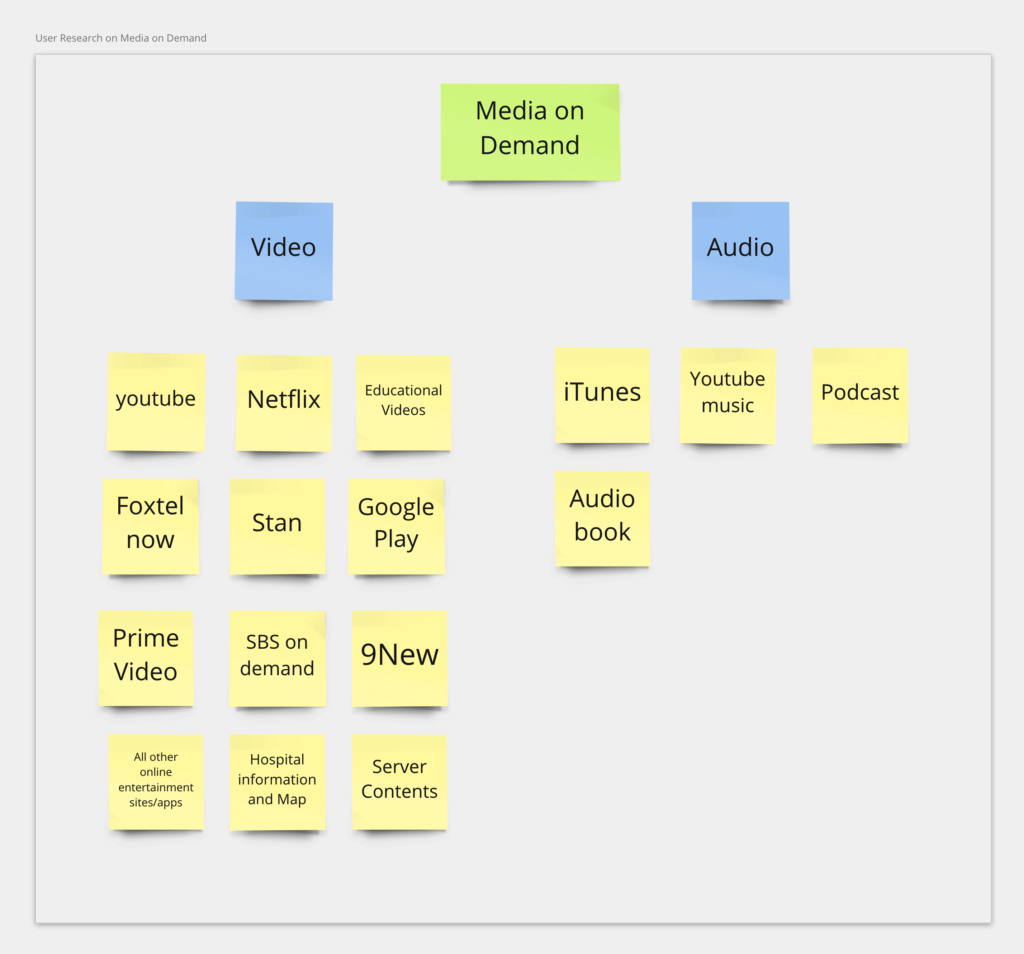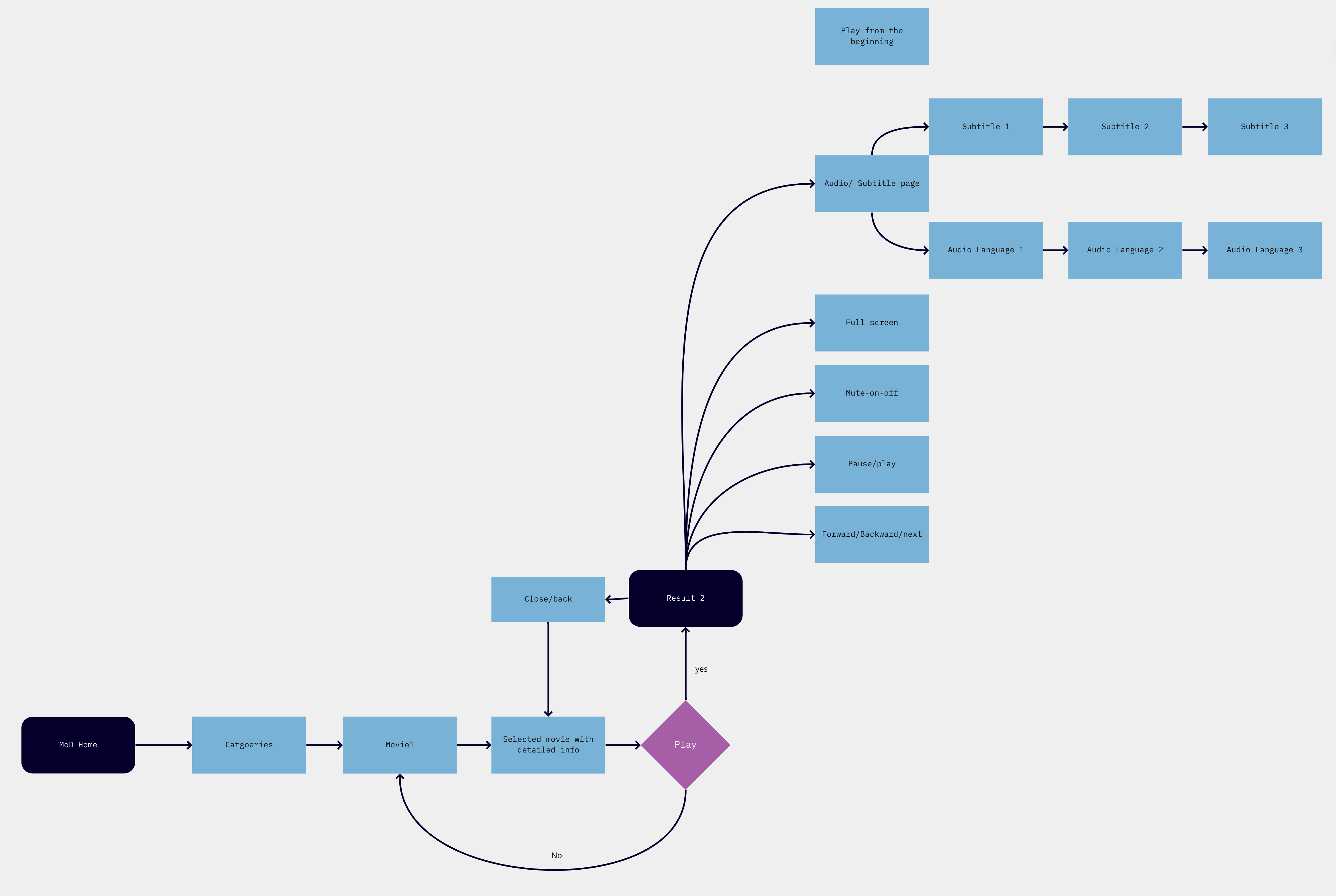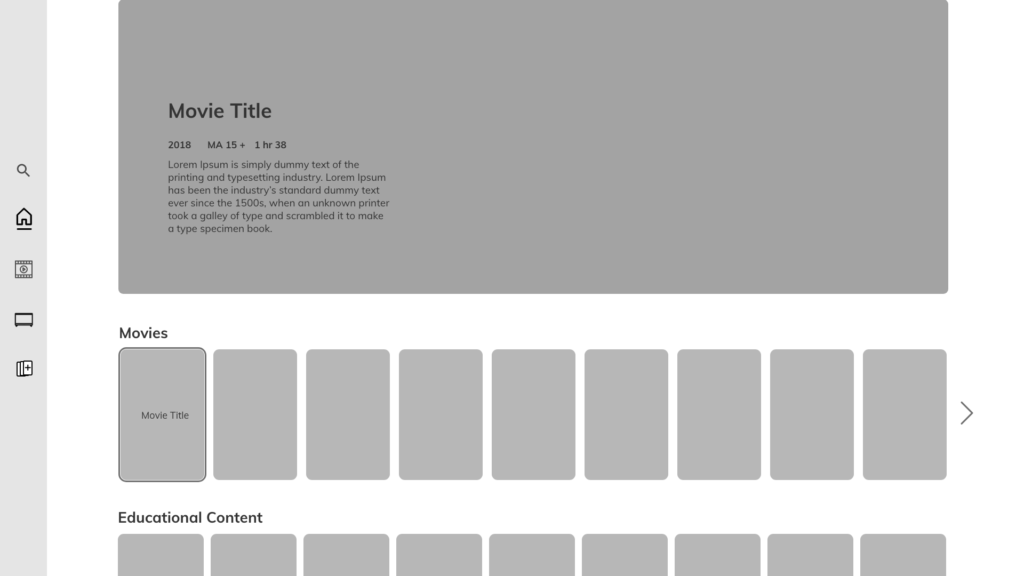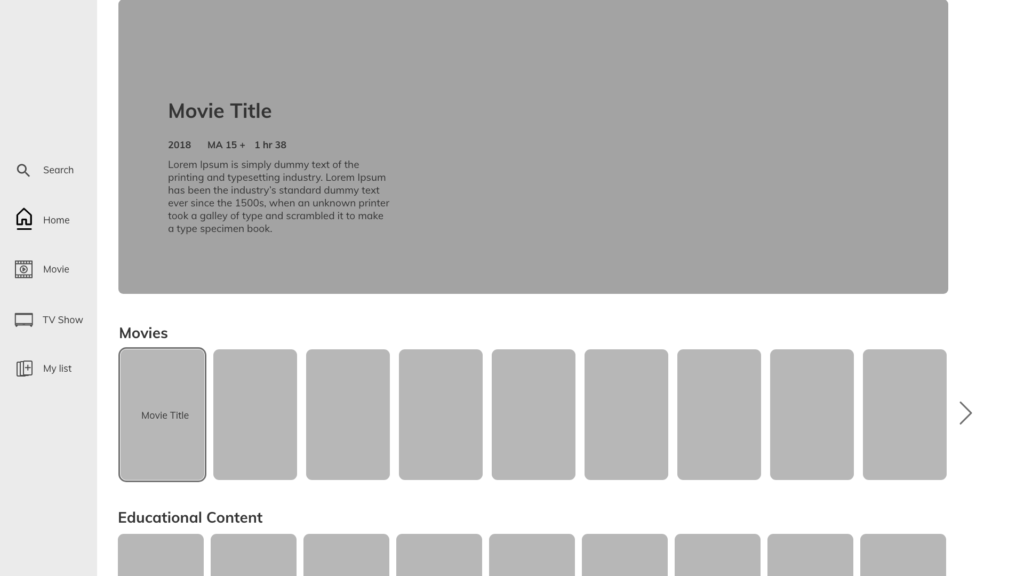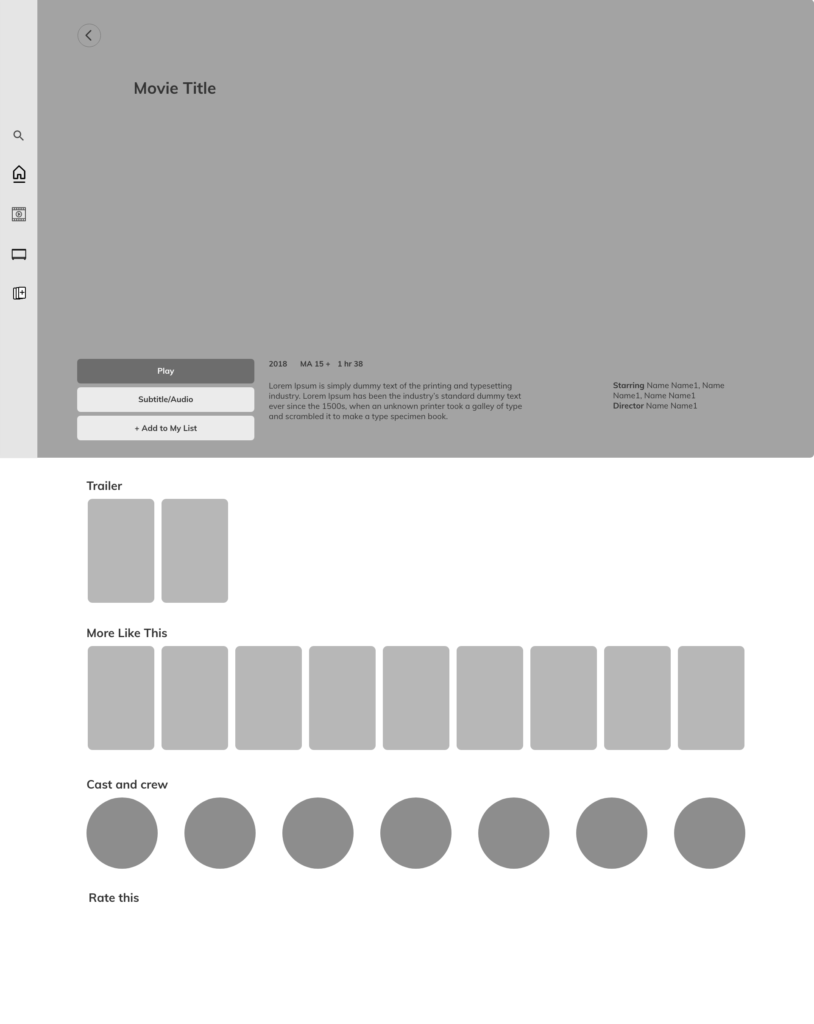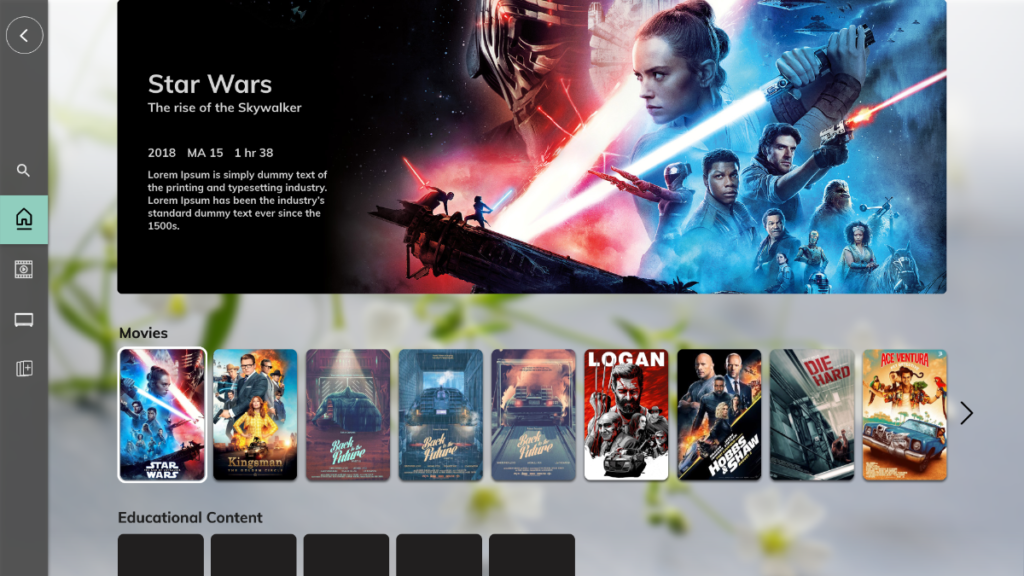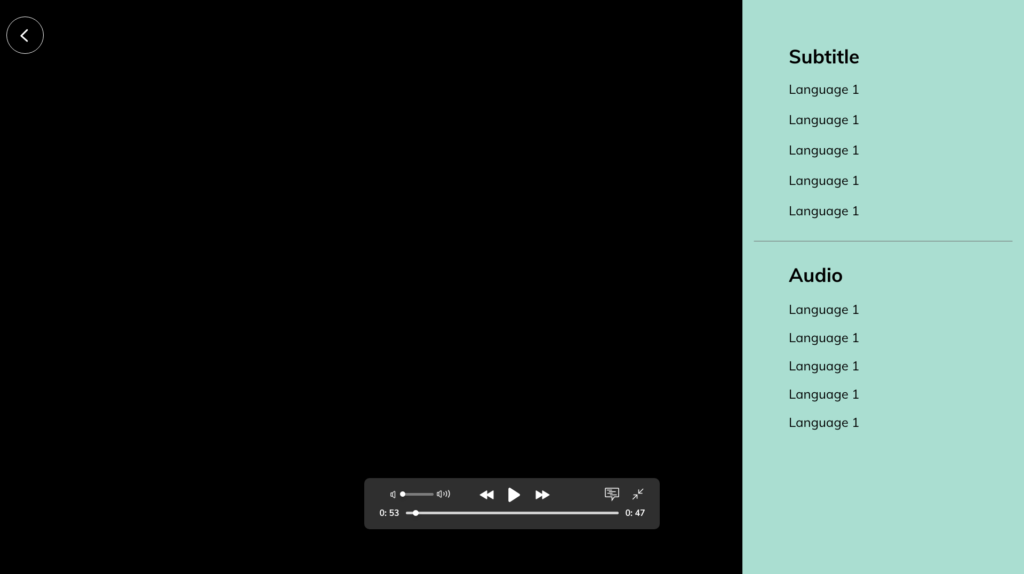Rauland
Media on Demand for patients in hospital
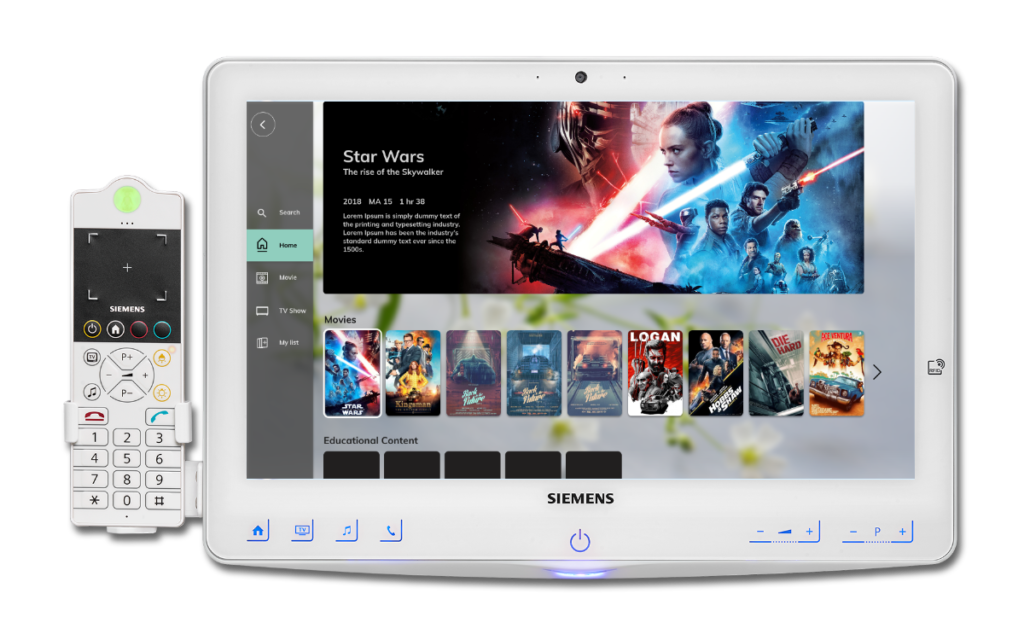
Project Overview
Overview
Type: Web application
Duration: 2 weeks
Role: UX/UI Designer
My responsibilities
As a soul designer I was responsible for project planning, research, user flow, information architecture (IA), collaborating with the stakeholders and product owner, High fidelity UI design
Tools
Adobe XD
Redmine,
Miro, MS Teams
Goal/Challenge
To design an online platform which enables users to enjoy any video/audio content on demand while staying at the hospital. This application is a part of Patient Entertainment System (PES) provided by Rauland as a segment of care platform for hospitals & clinicians.
The application is designed for Siemens HiMed Patient Bedside Terminal HD screen which can be operated by both the touch & handset device (screen sizes are 18 inch & 10 inch).
Outcomes
A new digital solution that enables a smooth end-to-end bedside entertainment and engagement for patients while staying at the hospital.
Background
Rauland is a complete technology solution provider to communicate, connect and care for acute care providers / clinicians and aged care providers. One of the solutions is to provide a beautiful bedside experience which include internet connectivity, electronic meal ordering, films and television, radio, games, call and conference capabilities, direct integration with hospital systems.
The Process
Step 1: Research & Discovery
(Collecting insights)
I started to find out the business goals and user types, needs and requirements. Then, I research the best practices based on the current market. Media or video on demand are one of the popular services among the users. I collaborated with the product owners to learn about limitations and expectations from the business point of view.
Key findings from research
- Identified the target users and demography. Usually elderly people
visits more often and the Accessibility needs to be considered carefully. - The contents needs to be presented based on each patient profiles.
The profile includes information such as ethnicity, age, gender & demography. - Educational contents can be supplied to each patient. Some of the contents are generic and some can be specific to the patients’ self awareness.
- The design needs to be flexible to incorporate super-text caption for hearing impaired
Target users
- Elderly Patient
- Middle Aged Patient.
- Child Patient
- Non-English Speaker
Step2: Defining the minimum viable product (MVP)
- Different content categories
- Search contents
- Favourite list category
- My list
- Playlists
- Summary of the contents
- Times
- Add to favourite
- More like this
- Trailer
- Starring and Director information
- Continue watching
- RatingsFull screen (on & off)
- Subtitle (with language options)
- Audio options with different languages
- Forward / Resume / Backward / Play / Pause / Stop
- Volume control / Mute (not-mute)
- Rate this
- More like this
Information Architecture
Now that features and goals were addressed with the personas in mind, I have come up with a site map to incorporate the navigation and interactions and overall architecture of the application that are required to use the app.
User Flow
Based on the requirements, I designed the user flow to list the logical steps and pages needed when using the app.
Wireframes
Based on the site map, I jumped into the XD and designed low-fi wireframes with the necessary logical steps. Then, I had a collaborative discussion session with the product owner and the internal stakeholder at this stage, where I have explained the steps and flow, reasonings logics behind the designs and features.
Step3: Design solution and UI mockups
I started working on the high fidelity UI design using the design system colours and font family of Patient Entertainment System solution. After finishing the UI, I arranged another session with the product owner and the stakeholder and received few feedbacks that we mutually agreed on. I tweaked and finally finished the design and delivered the link generated from the XD file with all the detailed specifications to the software developer.
Results
I received very good feedback from the product owner and also the internal stakeholder for the designs. The in-house product team (which I was a part of) appreciated about the link that I shared with the high-fi prototype specifications in it. This new Adobe XD feature saved not only a lot of time of mine but also the time of the software developer team.
I was mindful about the Accessibility standards as the product’s target audience varies from all types of backgrounds.
Limitations/ What is Next
The colour from the design system that I had to follow, was not very playful but the app needed to be a part of the same Patient Entertainment System (PES) family. So, I had to stick to the colour palette.
The design was completed within a tight timeframe.

